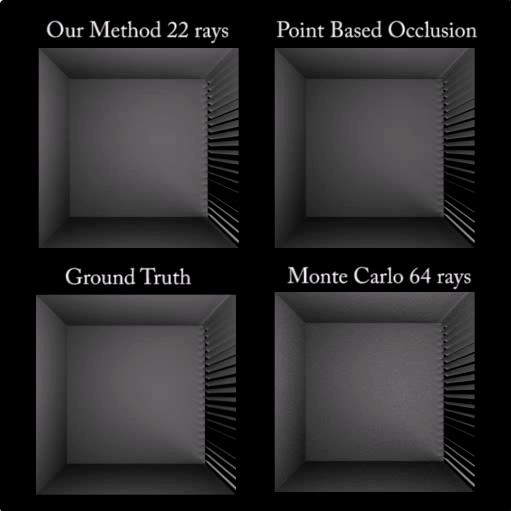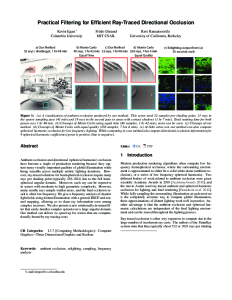Practical Filtering for Efficient Ray-Traced Directional Occlusion
Abstract
Ambient occlusion and directional (spherical harmonic) occlusion have become a staple of production rendering because they capture many visually important qualities of global illumination while being reusable across multiple artistic lighting iterations. However, ray-traced solutions for hemispherical occlusion require many rays per shading point (typically 256-1024) due to the full hemi-spherical angular domain. Moreover, each ray can be expensive in scenes with moderate to high geometric complexity. However, many nearby rays sample similar areas, and the final occlusion result is often low frequency. We give a frequency analysis of shadow light fields using distant illumination with a general BRDF and nor- mal mapping, allowing us to share ray information even among complex receivers. We also present a new rotationally-invariant filter that easily handles samples spread over a large angular domain. Our method can deliver 4x speed up for scenes that are computationally bound by ray tracing costs.
Citation
Kevin Egan, Frédo Durand, and Ravi Ramamoorthi. "Practical Filtering for Efficient Ray-Traced Directional Occlusion". SIGGRAPH Asia 2011, December 2011.
Supplemental Material

Video
Supplementary Video.









